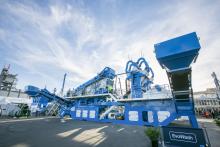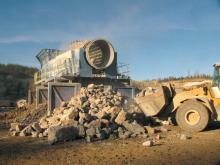Aggregates and mining equipment manufacturer
The Canadian company says the machine is compact, versatile and easy to maintain, with no timing belts or gears that normally need replacing.
Producers can customise the 1.83metre-wide machine in two lengths - 4.88m and 6.1m. Primarily mounted horizontally, the L-Class can also be inclined or declined as much as 30°.
The linear L-Class handles up to 400 tonnes/hour and features a 45° mounted double-shaft overhead drive system with direct-mounted motors. Producers can access multiple speed and stroke options by changing the pulleys and plate weights.
The application-specific body design offers simplified maintenance with a one-piece removable head and shaft assembly. In addition, unlike most linear-stroke machines, the L-Class does not require timing belts or gears, making maintenance even simpler.
The L-Class is also ideal for separating water from product in dewatering applications. When positioned at a negative incline of about 30°, the vibrating screen’s g-force moves wet material uphill on the screen. Gravity and the natural operation of the equipment help screen out water before the material reaches the discharge end. The thick layer of material on the screen also acts as a filter cake and presses water out, as well as trapping fine particles that would be lost in a thin layer screening process.







